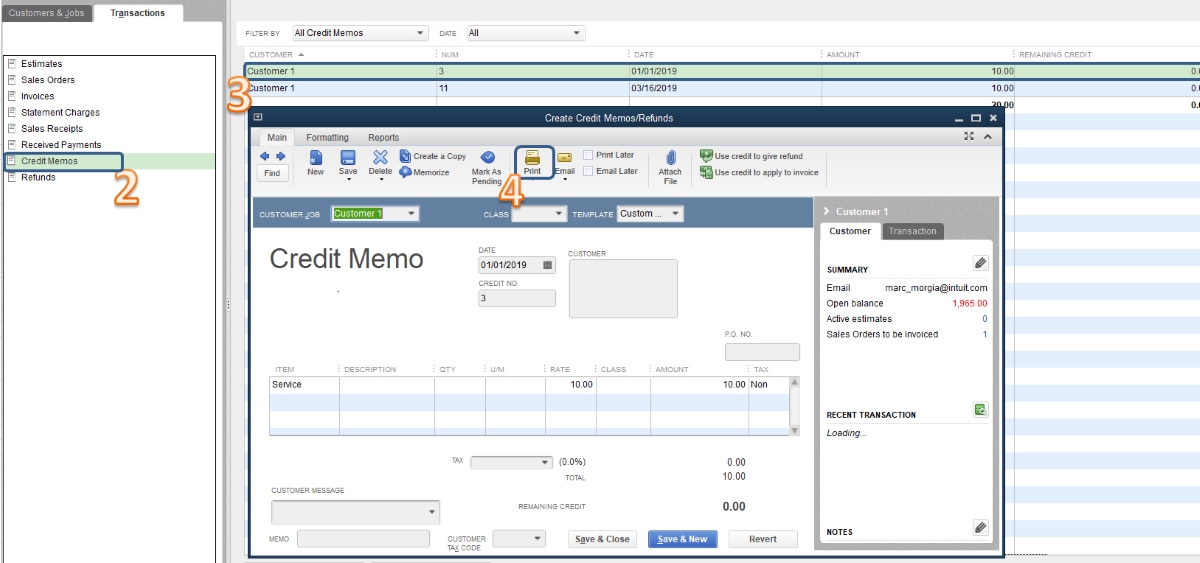

Finance
What Are Asset Management Ratios
Modified: February 21, 2024
Learn how finance professionals use asset management ratios to analyze and evaluate the efficiency and profitability of a company's use of its assets.
(Many of the links in this article redirect to a specific reviewed product. Your purchase of these products through affiliate links helps to generate commission for LiveWell, at no extra cost. Learn more)
Table of Contents
Introduction
Asset management ratios play a crucial role in assessing the financial health and efficiency of a company. These ratios help investors, creditors, and analysts evaluate how effectively a company utilizes its assets to generate profits and meet its financial obligations. By analyzing various aspects of a company’s asset management, these ratios provide valuable insights into its operational efficiency, liquidity, profitability, and overall financial performance.
Asset management ratios are widely used in the finance industry and are an essential tool for making informed investment decisions. Investors and stakeholders rely on these ratios to understand a company’s ability to generate returns on its assets and manage its financial obligations. These ratios also aid in comparing a company’s performance with industry peers and identifying potential areas of improvement.
Understanding asset management ratios requires a grasp of different types of ratios that provide insights into various aspects of a company’s asset utilization. Liquidity ratios measure a company’s ability to meet short-term obligations, efficiency ratios assess how effectively a company utilizes its assets, profitability ratios analyze the company’s profit generation capabilities, and debt management ratios evaluate its debt levels and ability to manage debt efficiently.
Calculating and interpreting these ratios is a critical skill for financial analysts, investors, and business owners. It allows them to assess the operational efficiency and financial performance of a company, identify potential weaknesses, and make informed decisions regarding investments, loans, and other financial engagements.
It is essential to note that while asset management ratios provide valuable insights, they also have limitations. These ratios do not capture the full picture of a company’s financial health and should be used in conjunction with other financial analysis tools and factors.
In this article, we will delve deeper into the importance of asset management ratios, explore different types of ratios, discuss their calculation methods, analyze their interpretation, and highlight their limitations.
Importance of Asset Management Ratios
Asset management ratios are essential for evaluating a company’s financial performance and efficiency. They provide valuable insights into how effectively a company is utilizing its assets to generate profits and meet its financial obligations. Here are some key reasons why these ratios are important:
1. Assessing Efficiency: Asset management ratios help assess how efficiently a company is using its assets to generate revenue. By analyzing ratios such as inventory turnover, accounts receivable turnover, and fixed asset turnover, investors and analysts can gauge the effectiveness of a company’s operations. Higher turnover ratios indicate better asset utilization and operational efficiency.
2. Evaluating Liquidity: Liquidity ratios such as the current ratio and the quick ratio provide insights into a company’s ability to meet its short-term obligations. These ratios measure the company’s liquidity position by comparing its current assets to current liabilities. It helps investors and creditors assess the company’s ability to cover its short-term debts and indicates its financial stability.
3. Assessing Profitability: Profitability ratios, such as return on assets (ROA) and return on equity (ROE), measure a company’s ability to generate profits from its assets and shareholders’ investments. These ratios help investors and analysts evaluate the company’s profitability relative to its asset base and equity. A higher ROA and ROE indicate better profit generation and efficient use of resources.
4. Analyzing Debt Management: Debt management ratios help assess a company’s ability to manage its debt obligations. Ratios such as debt-to-equity (D/E) and interest coverage ratio indicate the level of a company’s debt and its ability to cover interest payments. It helps investors and creditors evaluate the company’s financial risk and its ability to handle debt comfortably.
5. Comparing Performance: Asset management ratios enable investors and analysts to compare a company’s performance with its industry peers. By benchmarking ratios against industry averages, stakeholders can identify if a company’s asset utilization, liquidity, profitability, and debt management are better or worse than its competitors. This comparison provides valuable insights for investment decisions and assessing a company’s competitive position.
6. Financial Decision Making: Asset management ratios play a crucial role in financial decision-making processes. These ratios provide insights into a company’s financial health and are vital in determining loan approvals, investment choices, and assessing the viability of business opportunities. They help stakeholders make informed decisions based on the company’s asset utilization and financial performance.
By utilizing asset management ratios, investors, creditors, and analysts can gain a comprehensive understanding of a company’s financial position, operational efficiency, and profitability. These ratios aid in making informed investment decisions, identifying potential risks and opportunities, and assessing a company’s long-term sustainability.
Types of Asset Management Ratios
Asset management ratios can be classified into several categories based on the aspect of a company’s assets they measure. Each category of ratios provides unique insights into different aspects of asset utilization and financial performance. Here are the main types of asset management ratios:
1. Liquidity Ratios: Liquidity ratios measure a company’s ability to meet its short-term obligations using its current assets. Two commonly used liquidity ratios are the current ratio and the quick ratio. The current ratio compares current assets to current liabilities, while the quick ratio excludes inventory from current assets. These ratios indicate a company’s ability to cover its short-term debts and provide insights into its liquidity position.
2. Efficiency Ratios: Efficiency ratios, also known as turnover ratios, assess how effectively a company utilizes its assets to generate revenue. Some common efficiency ratios include inventory turnover, accounts receivable turnover, and fixed asset turnover. These ratios provide insights into the efficiency of inventory management, collection of accounts receivable, and utilization of fixed assets. Higher turnover ratios indicate more efficient asset utilization.
3. Profitability Ratios: Profitability ratios measure a company’s ability to generate profits from its assets and operations. Key profitability ratios include return on assets (ROA), return on equity (ROE), and gross profit margin. ROA indicates how effectively a company generates profits relative to its total assets, while ROE measures profitability in relation to shareholders’ equity. Gross profit margin shows the percentage of revenue that remains after deducting the cost of goods sold. These ratios provide insights into the company’s profitability and financial performance.
4. Debt Management Ratios: Debt management ratios assess a company’s ability to manage its debt obligations. The most common ratios in this category include debt-to-equity (D/E) ratio and interest coverage ratio. The D/E ratio compares a company’s total debt to its total equity, indicating the proportion of debt financing relative to equity. The interest coverage ratio measures a company’s ability to cover interest payments with its earnings. These ratios help evaluate a company’s debt levels, financial stability, and its ability to handle debt obligations.
5. Market Ratios: Market ratios are used to assess a company’s value in the market. They include ratios such as price-to-earnings (P/E) ratio and market-to-book (M/B) ratio. The P/E ratio compares a company’s stock price to its earnings per share, indicating the investor’s perception of its future earnings potential. The M/B ratio compares a company’s market value to its book value, highlighting whether the company is overvalued or undervalued. These ratios provide insights into how the market values the company.
By analyzing these different types of asset management ratios, investors, creditors, and analysts can gain a comprehensive understanding of a company’s operational efficiency, liquidity, profitability, and debt management. These ratios serve as valuable tools for assessing financial health, making investment decisions, and evaluating the sustainability and competitive position of a company.
Liquidity Ratios
Liquidity ratios are an essential category of asset management ratios that measure a company’s ability to meet its short-term financial obligations. These ratios assess the company’s liquidity position by comparing its current assets to its current liabilities. Liquidity ratios provide insights into the company’s ability to convert its assets into cash to settle debts promptly. Here are two commonly used liquidity ratios:
a) Current Ratio: The current ratio is a widely used liquidity ratio that compares a company’s current assets to its current liabilities. It is calculated by dividing current assets by current liabilities. The formula for the current ratio is as follows:
The current ratio indicates how easily a company can meet its short-term obligations. Generally, a current ratio of 2:1 or higher is considered good, as it suggests that the company has sufficient current assets to cover its current liabilities. However, a very high current ratio may indicate poor asset utilization.
b) Quick Ratio: The quick ratio, also known as the acid-test ratio, is a more stringent measure of liquidity as it excludes inventory from the current assets. It is calculated by subtracting inventory from current assets and then dividing the result by current liabilities. The formula for the quick ratio is as follows:
The quick ratio provides a more conservative measure of a company’s ability to meet short-term obligations. By excluding inventory, it focuses on the company’s readily available assets that can be quickly converted into cash. A quick ratio of 1:1 or higher is generally considered favorable.
Both the current ratio and quick ratio indicate a company’s short-term liquidity position. These ratios are important for creditors, suppliers, and stakeholders as they assess the company’s ability to cover its short-term liabilities. Companies with strong liquidity ratios are better positioned to manage unexpected expenses, fund growth, and build investor confidence.
It is important to note that liquidity ratios should be interpreted in conjunction with other financial indicators and industry benchmarks. A high liquidity ratio does not necessarily indicate better financial health, as excess liquidity can suggest poor asset utilization. Similarly, a low liquidity ratio may not always indicate financial distress if the company has other sources of funding, such as access to credit facilities.
By analyzing liquidity ratios, investors, creditors, and analysts can gauge a company’s ability to meet its short-term obligations, manage cash flow, and maintain financial stability. These ratios are an integral part of assessing a company’s overall financial health and should be used in conjunction with other financial measures to gain a comprehensive understanding of its liquidity position.
Efficiency Ratios
Efficiency ratios, also known as turnover ratios, are a category of asset management ratios that measure how effectively a company utilizes its assets to generate revenue. These ratios provide insights into the company’s operational efficiency and asset management practices. By analyzing efficiency ratios, investors and analysts can assess the company’s ability to generate sales, manage inventory, collect receivables, and utilize its fixed assets. Here are three commonly used efficiency ratios:
a) Inventory Turnover Ratio: The inventory turnover ratio measures how efficiently a company manages its inventory by comparing the cost of goods sold (COGS) to the average inventory level. It is calculated by dividing COGS by the average inventory. The formula for the inventory turnover ratio is as follows:
A higher inventory turnover ratio indicates that the company is effectively selling its inventory and restocking it frequently. This suggests efficient inventory management practices and reduces the risk of inventory obsolescence. However, a very high ratio may indicate stockouts and potential missed sales opportunities.
b) Accounts Receivable Turnover Ratio: The accounts receivable turnover ratio measures how efficiently a company collects payment from its customers. It is calculated by dividing net credit sales by the average accounts receivable. The formula for the accounts receivable turnover ratio is as follows:
A higher accounts receivable turnover ratio indicates that the company is collecting payments from customers more quickly. This suggests effective credit management practices and improved cash flow. Conversely, a low ratio could indicate issues with customer creditworthiness or collection processes.
c) Fixed Asset Turnover Ratio: The fixed asset turnover ratio measures how effectively a company utilizes its fixed assets to generate sales. It is calculated by dividing net sales by the average fixed assets. The formula for the fixed asset turnover ratio is as follows:
A higher fixed asset turnover ratio indicates that the company generates more sales per dollar invested in fixed assets. This suggests efficient utilization of fixed assets to generate revenue. A lower ratio may indicate underutilization or overinvestment in fixed assets.
Efficiency ratios help investors and analysts assess a company’s ability to generate revenue and effectively manage its assets. These ratios provide insights into inventory management, collection of receivables, and utilization of fixed assets. By comparing efficiency ratios with industry benchmarks and historical performance, stakeholders can identify areas of improvement and potential red flags.
It is important to note that efficiency ratios should be interpreted in the context of the industry and company-specific factors. A high turnover ratio might be favorable in one industry but not in another. Additionally, efficiency ratios alone do not provide a complete financial picture and need to be considered alongside other financial indicators.
By analyzing efficiency ratios, investors, creditors, and analysts can gain insights into how effectively a company utilizes its assets to generate revenue. These ratios assist in evaluating operational efficiency, identifying potential areas for improvement, and making informed decisions regarding investments and financial engagements.
Profitability Ratios
Profitability ratios are a category of asset management ratios that measure a company’s ability to generate profits from its assets and operations. These ratios provide insights into the company’s profitability and its ability to generate a return on investment. By analyzing profitability ratios, investors and analysts can assess the company’s profit generation capabilities and compare its financial performance with industry peers. Here are three commonly used profitability ratios:
a) Return on Assets (ROA): Return on Assets measures how effectively a company utilizes its assets to generate profits. It is calculated by dividing net income by average total assets. The formula for the Return on Assets ratio is as follows:
A higher ROA indicates that the company is generating more profits relative to its asset base, which demonstrates efficient asset utilization. This ratio is useful for comparing the profitability of companies within the same industry or benchmarking against industry averages.
b) Return on Equity (ROE): Return on Equity measures the profitability of a company in relation to shareholders’ equity. It is calculated by dividing net income by average shareholders’ equity. The formula for the Return on Equity ratio is as follows:
A higher ROE indicates that the company generates more profits per unit of shareholders’ equity. It reflects the company’s ability to generate returns for its shareholders and is an important ratio for investors assessing the profitability of a company.
c) Gross Profit Margin: Gross Profit Margin measures the proportion of revenue that remains after deducting the cost of goods sold (COGS). It is calculated by dividing gross profit by net sales. The formula for Gross Profit Margin is as follows:
A higher Gross Profit Margin indicates that the company has a higher proportion of revenue available to cover operating expenses and generate profits. This ratio represents the efficiency of the company’s pricing strategy and cost management.
Profitability ratios provide valuable insights into a company’s ability to generate profits and highlights its financial performance. However, it is crucial to consider these ratios in the context of the industry and company-specific factors. Different industries may have variations in profitability levels, and the interpretation of profitability ratios should be made accordingly.
Investors and analysts use profitability ratios to evaluate a company’s financial performance, assess its profitability relative to its asset base and equity, and compare it with industry peers. These ratios aid in decision-making processes, such as evaluating investment opportunities, assessing the company’s sustainability, and identifying areas for improvement in profit generation and cost management.
Debt Management Ratios
Debt management ratios are a category of asset management ratios that provide insights into a company’s level of debt and its ability to manage debt effectively. These ratios assess the company’s financial risk and its ability to meet debt obligations. By analyzing debt management ratios, investors and analysts can evaluate the company’s capital structure, solvency, and financial stability. Here are two commonly used debt management ratios:
a) Debt-to-Equity (D/E) Ratio: The Debt-to-Equity ratio measures the proportion of a company’s financing that comes from debt relative to shareholders’ equity. It is calculated by dividing total debt by total equity. The formula for the Debt-to-Equity ratio is as follows:
A high D/E ratio indicates that the company relies more on debt financing than on equity. This can signify higher financial risk, as excessive debt can impact the company’s ability to meet interest payments and can limit its flexibility. Ultimately, a healthy D/E ratio depends on the industry and the company’s specific circumstances. Comparing the D/E ratio with industry peers or historical performance can provide further insights.
b) Interest Coverage Ratio: The Interest Coverage ratio measures a company’s ability to cover its interest expenses with its earnings. It evaluates the company’s ability to manage interest payments and provides insights into its financial stability. The Interest Coverage ratio is calculated by dividing earnings before interest and taxes (EBIT) by interest expenses. The formula for the Interest Coverage ratio is as follows:
A higher Interest Coverage ratio indicates that the company has sufficient earnings to comfortably cover its interest payments. This suggests a lower financial risk and a higher ability to manage debt obligations. Conversely, a lower ratio may indicate that the company is at higher risk of defaulting on interest payments.
Debt management ratios help investors and analysts assess a company’s capital structure and its ability to manage debt effectively. These ratios provide insights into the company’s financial risk, financial stability, and its capacity to handle debt obligations. It is important to note that different industries may have different acceptable levels of debt, and debt management ratios should be analyzed in the context of industry benchmarks and the company’s specific circumstances.
By analyzing debt management ratios, investors and analysts can make informed decisions regarding a company’s financial health and investment potential. These ratios aid in assessing the company’s ability to manage its debt load, evaluate financial risk, and determine the sustainability of its operations.
How to Calculate Asset Management Ratios
Calculating asset management ratios involves using relevant financial data from a company’s financial statements. These ratios provide insights into different aspects of a company’s asset utilization, liquidity, profitability, and debt management. Here are the general steps to calculate asset management ratios:
1. Identify the Required Financial Data: Determine the specific financial data needed to calculate the desired asset management ratio. For example, if calculating the current ratio, you will need the company’s current assets and current liabilities, which can be found on the balance sheet.
2. Obtain the Financial Statements: Access the company’s financial statements, including the balance sheet, income statement, and statement of cash flows. These statements provide the necessary information for calculating the ratios.
3. Determine the Formula: Understand the formula for the specific asset management ratio you wish to calculate. Each ratio has a unique formula that incorporates specific financial data.
4. Retrieve the Relevant Data: Extract the required financial data from the financial statements. For example, if calculating the accounts receivable turnover ratio, you will retrieve the net credit sales and average accounts receivable figure from the appropriate financial statement.
5. Perform the Calculation: Plug the retrieved data into the formula for the asset management ratio and perform the calculation. Double-check to ensure accurate input of the financial data.
6. Interpret the Ratio: Once the calculation is complete, interpret the ratio to gain insights into the company’s financial performance. Compare the calculated ratio to industry benchmarks, historical performance, and relevant standards to assess the company’s asset utilization, liquidity, profitability, or debt management practices.
Remember that the interpretation of asset management ratios should consider industry-specific factors and the company’s unique circumstances. Comparing the ratios over time can also help identify trends and deviations in the company’s financial performance.
Various financial tools and software can facilitate the calculation of asset management ratios. These tools automate the process and minimize the chances of errors. Additionally, financial analysis platforms may provide pre-calculated ratios based on the inputted financial data.
By accurately calculating and interpreting asset management ratios, investors, creditors, and analysts gain valuable insights into a company’s financial health, operational efficiency, and overall performance. These ratios aid in making informed decisions and assessing the company’s strength and potential areas of improvement.
Interpretation and Analysis of Asset Management Ratios
Interpreting and analyzing asset management ratios is key to gaining insights into a company’s financial health and operational efficiency. These ratios provide valuable information about a company’s asset utilization, liquidity, profitability, and debt management practices. Here are some important considerations for interpreting and analyzing asset management ratios:
1. Benchmarking: Comparing the calculated ratios to industry benchmarks and competitors is crucial for proper interpretation. Benchmarking enables you to assess how the company’s ratios stack up against industry averages or best practices. It helps identify whether the company’s asset management is above or below the industry standard, highlighting potential areas of weakness or strength.
2. Historical Analysis: Examining the trends and changes in the ratios over time provides insights into the company’s performance. Comparing ratios from different periods helps identify patterns, improvements, or deteriorations in the company’s asset management practices. It is important to consider the underlying factors and external influences that might have caused the changes.
3. Industry and Company-Specific Factors: It is essential to consider industry-specific factors when interpreting asset management ratios. Various industries may have different acceptable levels of liquidity, asset turnover, or debt management. Additionally, company-specific factors like business model, size, and market dynamics should be taken into account to ensure a proper analysis.
4. Ratios in Combination: Interpreting a single ratio may not provide a complete picture of a company’s financial health. It is crucial to analyze ratios in combination to get a comprehensive understanding of the company’s asset management. For example, analyzing liquidity ratios (e.g., current ratio) along with efficiency ratios (e.g., inventory turnover) can provide insights into how efficiently the company uses its assets to meet its short-term obligations.
5. Deviations from Industry Norms: Significant deviations from industry norms or historical performance should be investigated further. Deviations may indicate potential strengths or weaknesses in the company’s asset management practices. It is important to dig deeper to understand the reasons behind the deviations and assess the impact on the company’s financial performance.
6. External Factors: Consider external factors that may influence the ratios, such as changes in regulations, economic conditions, or industry trends. These factors can have a significant impact on a company’s asset management ratios and should be taken into account when interpreting the results.
7. Integration with Other Financial Analysis: Asset management ratios should be integrated with other financial analysis techniques, such as trend analysis, cash flow analysis, and profitability analysis. Combining different analysis methods provides a more holistic view of the company’s financial performance and facilitates better decision-making.
By carefully interpreting and analyzing asset management ratios, investors, creditors, and analysts can gain valuable insights into a company’s financial health, operational efficiency, and overall performance. These insights aid in identifying strengths, weaknesses, and potential areas for improvement, enabling informed decision-making and assessment of the company’s long-term sustainability.
Limitations of Asset Management Ratios
While asset management ratios provide valuable insights into a company’s financial health, it is important to acknowledge their limitations. These limitations should be taken into consideration when interpreting and relying on asset management ratios for decision-making. Here are some key limitations to keep in mind:
1. Simplified View: Asset management ratios provide a simplified view of a company’s financial performance. They focus on specific aspects of asset utilization, liquidity, profitability, and debt management, but they do not capture the full complexity of a company’s operations. It is crucial to supplement ratio analysis with a comprehensive understanding of the company’s industry dynamics, business model, market conditions, and other relevant factors.
2. Industry and Company Variations: Different industries have different operating models and asset utilization norms. Comparing asset management ratios across industries may not provide accurate benchmarks. Similarly, variations in company size, market position, and business strategies can result in different optimal ratios even within the same industry. It is important to consider industry and company-specific factors while interpreting ratios.
3. Historical Context: Ratios should be analyzed in the context of the company’s historical performance. Trends and deviations over time are crucial for proper interpretation. A ratio may appear high or low, but without historical data, it is difficult to determine if it represents an improvement or deterioration. Historical analysis helps identify patterns and evaluate the effectiveness of strategies implemented by the company.
4. Window of Analysis: Ratios provide a snapshot of a company’s financial health at a specific point in time. Changes in market conditions, economic factors, or company strategies can significantly impact ratios between different reporting periods. Interpreting ratios requires considering long-term trends and understanding the factors that may have contributed to the observed values.
5. Reliance on Financial Statements: Asset management ratios rely on the accuracy and reliability of a company’s financial statements. Inaccurate or manipulated financial data can lead to misleading ratio calculations. It is important to critically assess the quality and transparency of the financial statements before relying on the results of ratio analysis.
6. Lack of Contextual Information: Ratios alone do not provide contextual information about the underlying reasons for certain values. They do not reveal the factors driving the results or the causes behind any anomalies. Additional analysis and interpretation are required to gain a deeper understanding of the company’s financial performance.
7. External Factors: Asset management ratios do not fully capture external factors that may impact a company’s financial performance. Changes in the regulatory environment, industry trends, technological advancements, or macroeconomic conditions can significantly affect a company’s asset management ratios. Understanding and considering external factors is essential for accurate interpretation.
Despite these limitations, asset management ratios remain valuable tools for assessing a company’s financial health, operational efficiency, and overall performance. It is important to use them in conjunction with qualitative analysis, industry benchmarks, and other financial metrics to gain a comprehensive understanding of a company’s financial position.
Conclusion
Asset management ratios are essential tools for evaluating a company’s financial health and operational efficiency. These ratios provide valuable insights into a company’s asset utilization, liquidity, profitability, and debt management practices. By analyzing and interpreting these ratios, investors, creditors, and analysts can make informed decisions and assess a company’s financial performance.
It is important to consider the limitations of asset management ratios, such as their simplified view of a company’s operations, industry and company variations, historical context, reliance on financial statements, lack of contextual information, and the influence of external factors. Understanding these limitations allows for a more comprehensive and accurate interpretation of the ratios.
When interpreting asset management ratios, it is crucial to benchmark against industry peers and historical performance to gain meaningful insights. Analyzing trends, deviations, and combining ratios provides a more holistic understanding of a company’s financial performance. Additionally, integrating ratio analysis with other financial analysis techniques enhances the decision-making process.
Asset management ratios aid in assessing a company’s operational efficiency, liquidity, profitability, and debt management. They facilitate comparisons with industry benchmarks, identify areas for improvement, and highlight potential risks. However, ratio analysis should not be used in isolation but rather as part of a larger analysis that considers industry dynamics, company-specific factors, and a thorough evaluation of financial statements and contextual information.
In conclusion, asset management ratios are valuable tools for evaluating a company’s financial performance. They provide insights into key areas of a company’s operations and help stakeholders make informed decisions. By understanding and interpreting these ratios in the appropriate context, investors, creditors, and analysts can gain a deeper understanding of a company’s financial health and position themselves for successful investment and financial decision-making.














